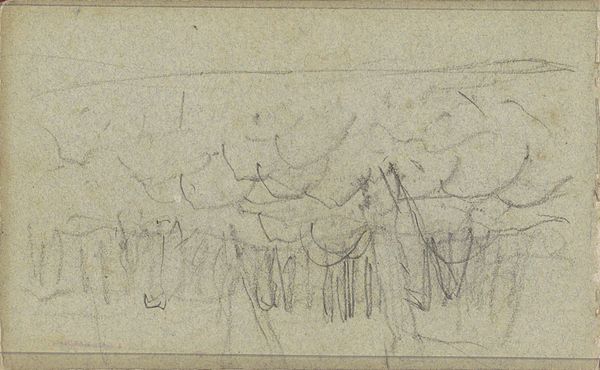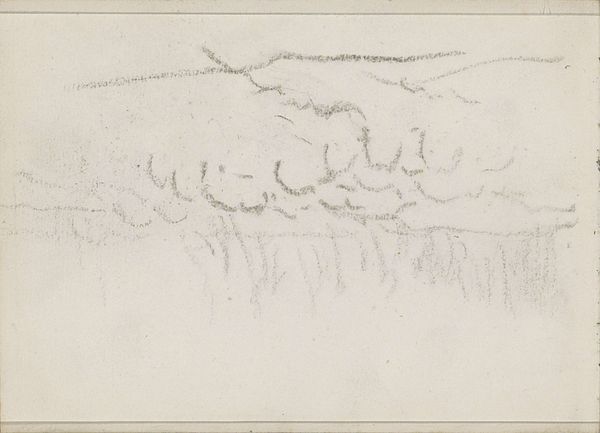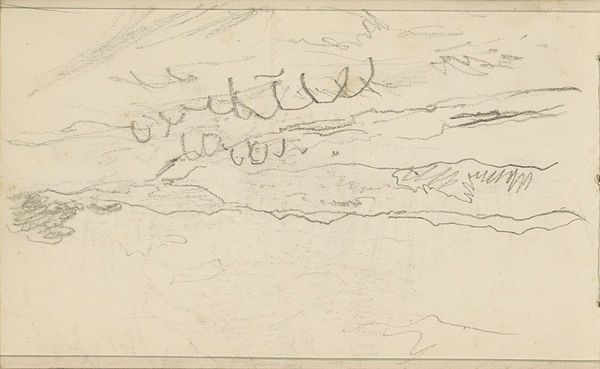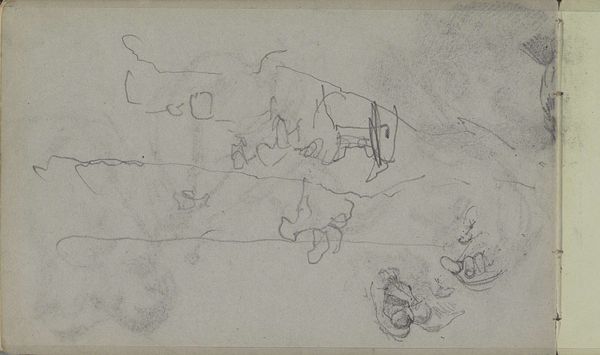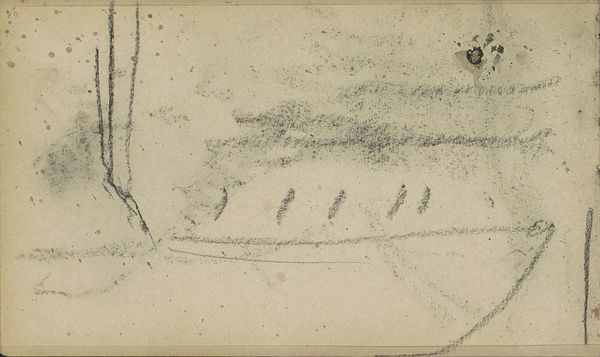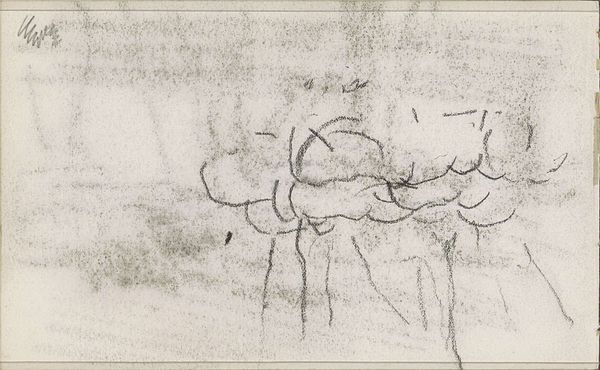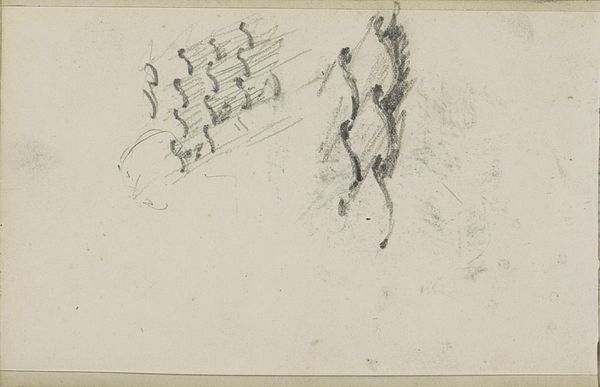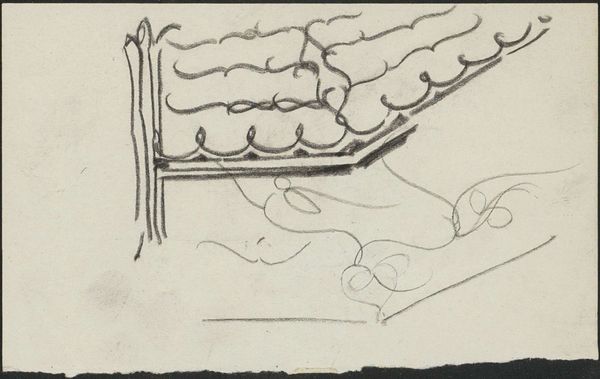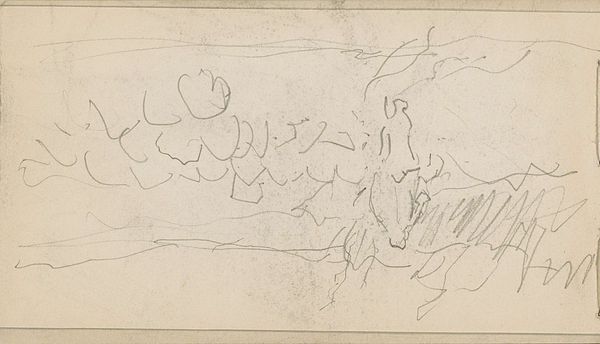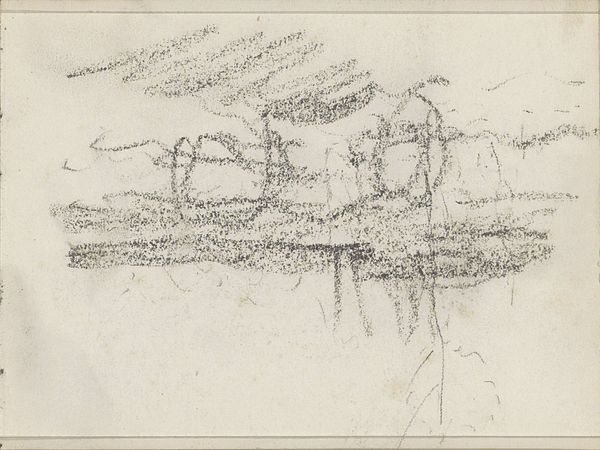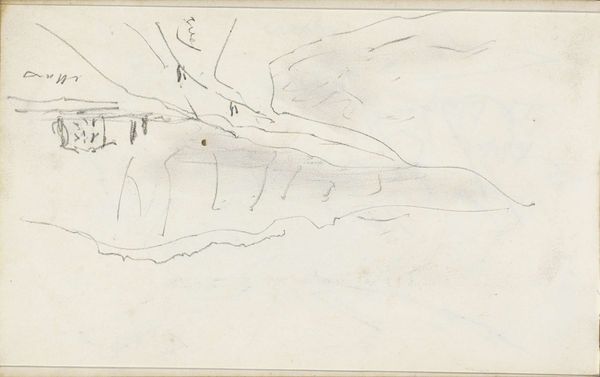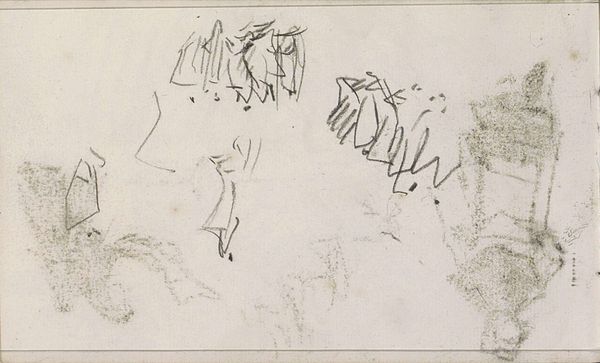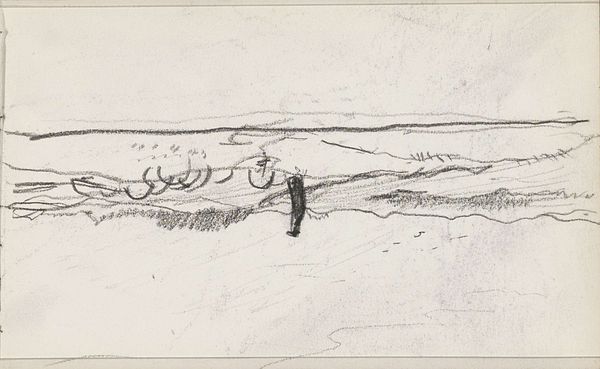
drawing, pencil
#
drawing
#
dutch-golden-age
#
impressionism
#
landscape
#
pencil
#
realism
Copyright: Rijks Museum: Open Domain
Curator: Here we have Anton Mauve's "Herder met een kudde schapen in een landschap", or "Shepherd with a Flock of Sheep in a Landscape," a pencil drawing likely created between 1876 and 1888. What's your immediate take on it? Editor: Hushed. The sketchiness evokes a sense of fleeting quiet, like a moment stolen from a very ordinary day. It feels very Dutch somehow. Curator: I find that interesting. Can you expand? I'm curious how the piece, however understated it might look, became a touchstone for future generations of Dutch painters and for broader European audiences looking for simple naturalness. Editor: I suppose there’s an honesty, the seeming lack of fuss, though clearly, there *is* artistry. It's less about idealized beauty, but more about portraying a shepherd doing his job and his flock, maybe seeking some shelter on a gray day. There is that sense of almost mundane belonging—something many Europeans identified with, amid rapid social changes. Curator: The placement of sheep almost as single visual bulk is very deliberate. One might easily miss this for a crude artwork, but his use of soft pencil lines and broad smudges lends the scene a sense of atmospheric depth—you almost feel the dampness in the air, right? Editor: Absolutely. And even with the limited detail, there’s an understanding of movement. Those sweeping marks suggesting the field… they have such life. The strokes bring a dynamic energy to this quite understated scene. You can almost see the animals move, their wool subtly animated in the wind, if there was one. It’s very tactile somehow. Curator: What Mauve achieved here really cemented a new style of naturalism, a key step towards some Impressionistic landscape techniques. What lessons do you think a contemporary artist or even just a museumgoer can still find here? Editor: I'd say embrace the quiet, find beauty in simplicity. Allow yourself to notice the textures of everyday life, and if one is a visual artist – experiment a lot with that kind of visual shorthand—those few lines that capture the whole spirit of a subject. Also, do some sheep-gazing! It is very therapeutic. Curator: And for me? Seeing Mauve in the wider context of his peers helps clarify a wider understanding about the development and market acceptance for landscape paintings. Not necessarily grand gestures of power and history. It makes one consider what role does this aesthetic lens plays now, and who now gets the privilege to define "natural" imagery.
Comments
No comments
Be the first to comment and join the conversation on the ultimate creative platform.
